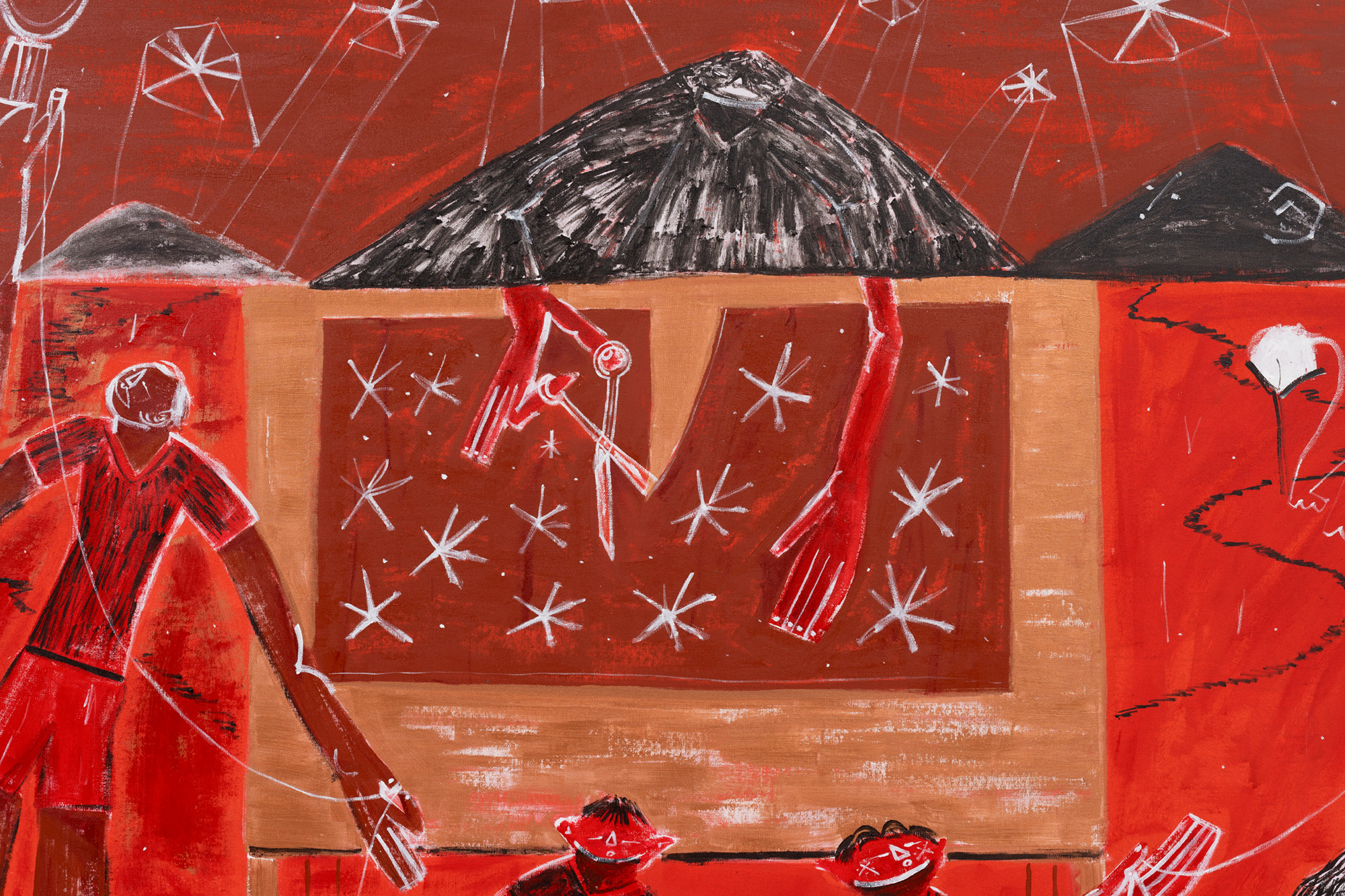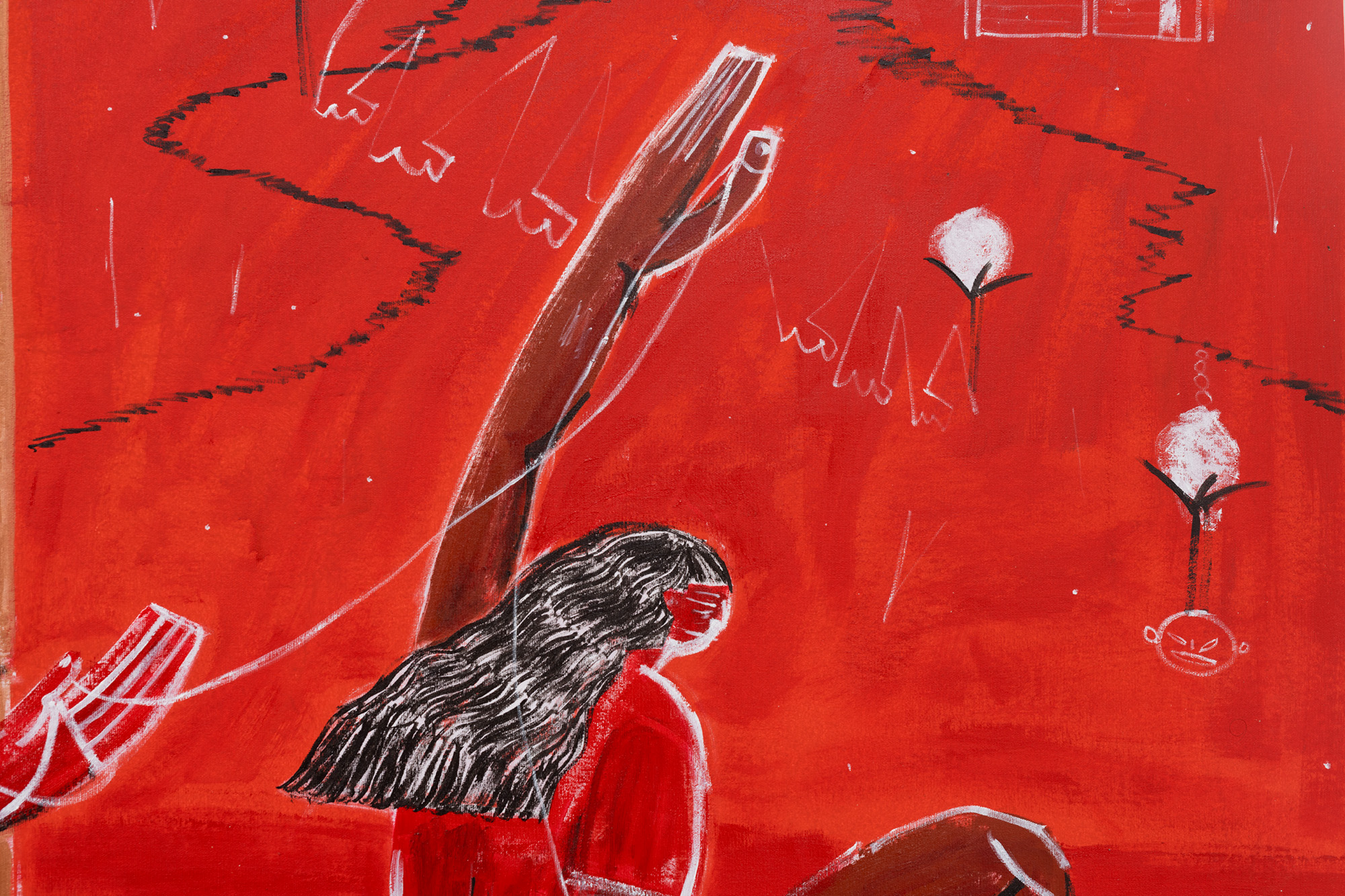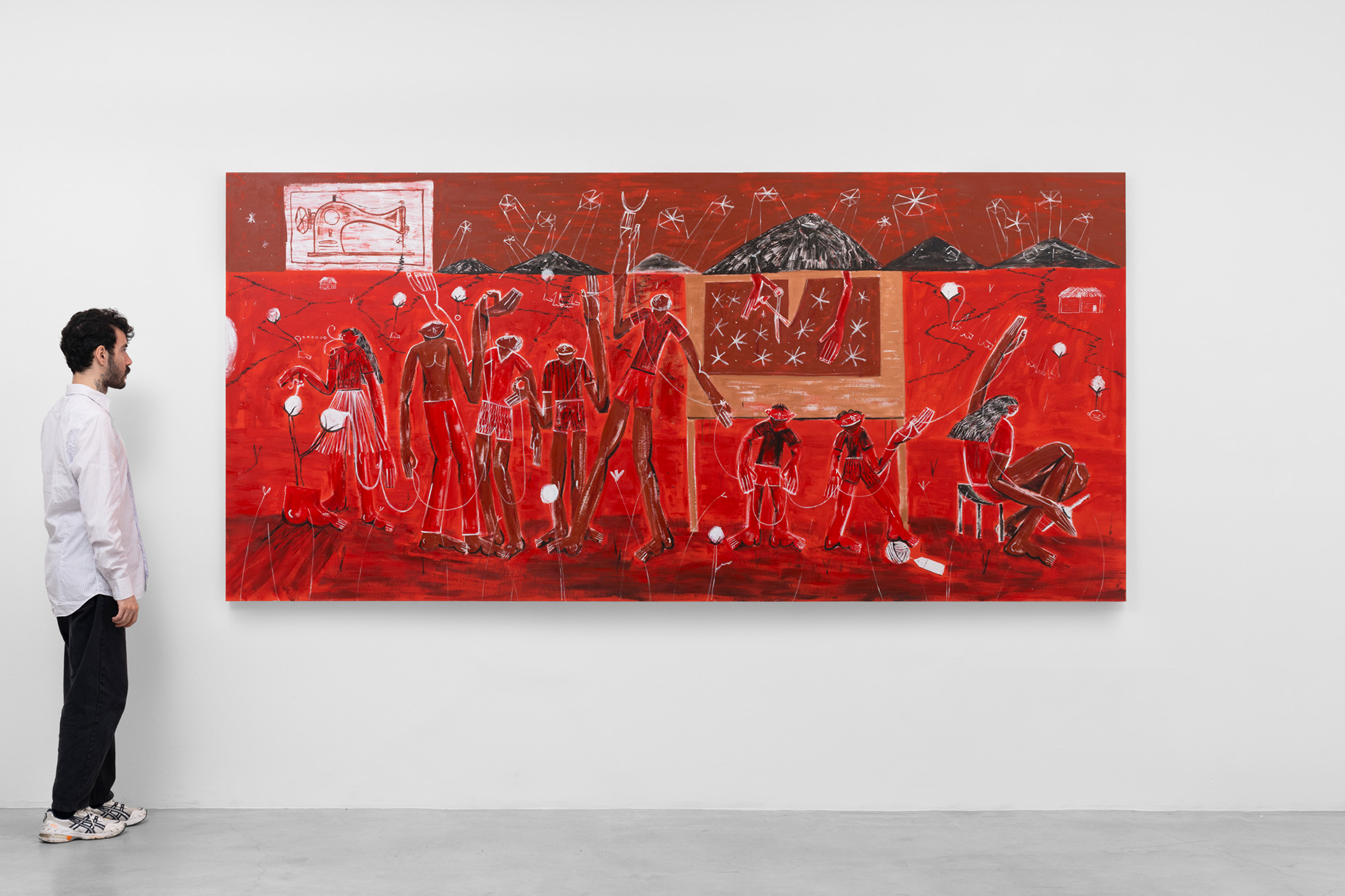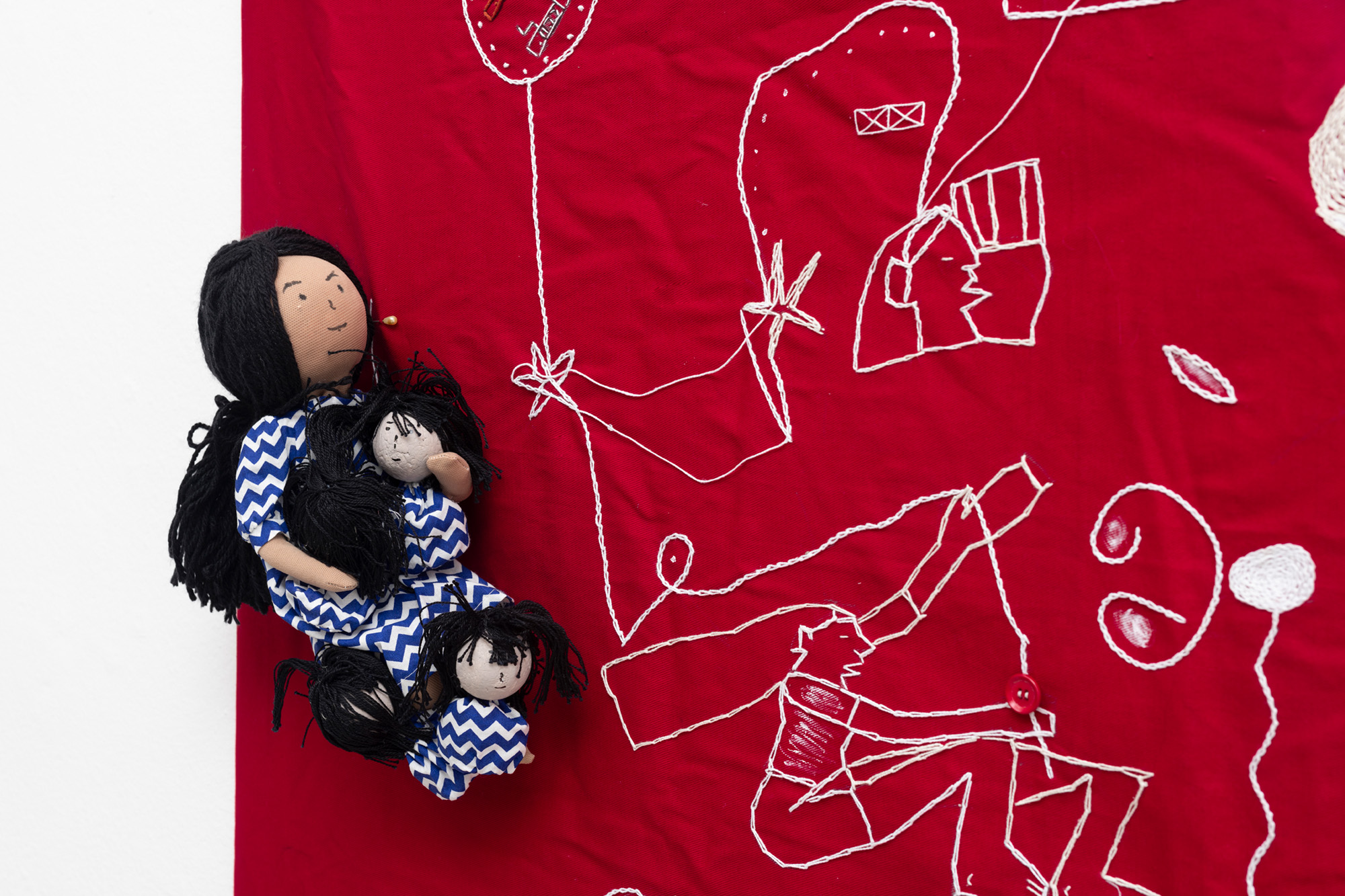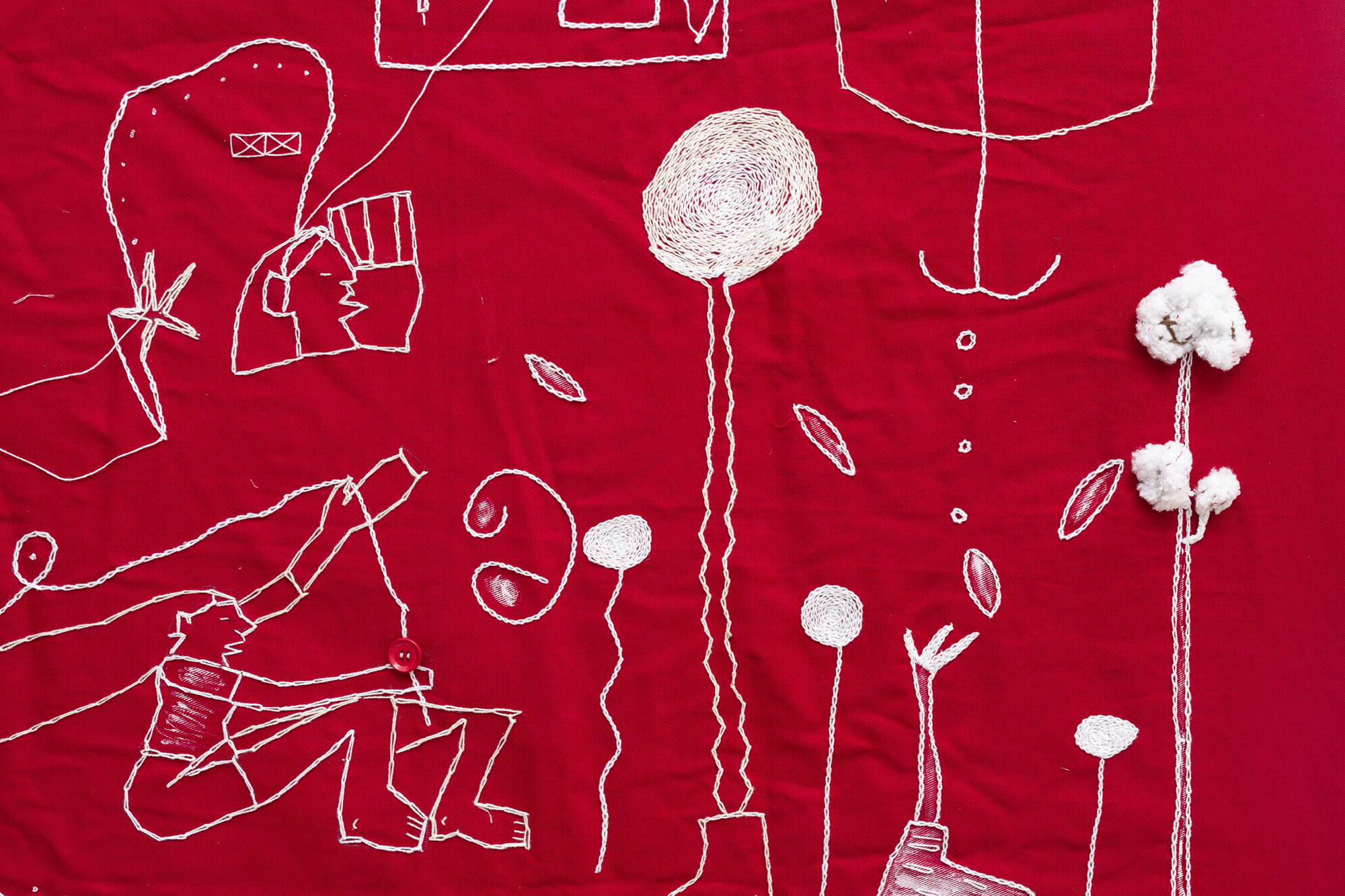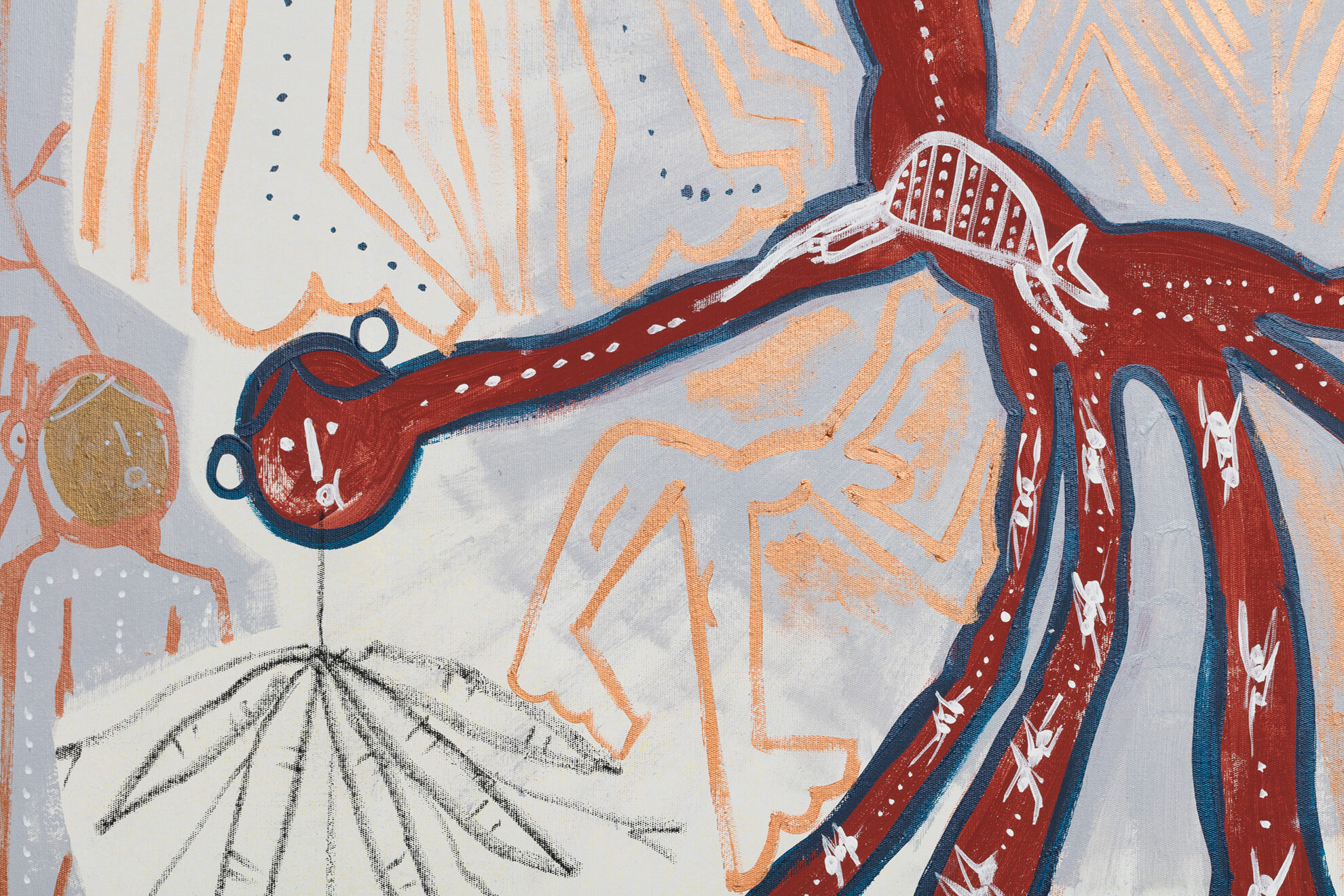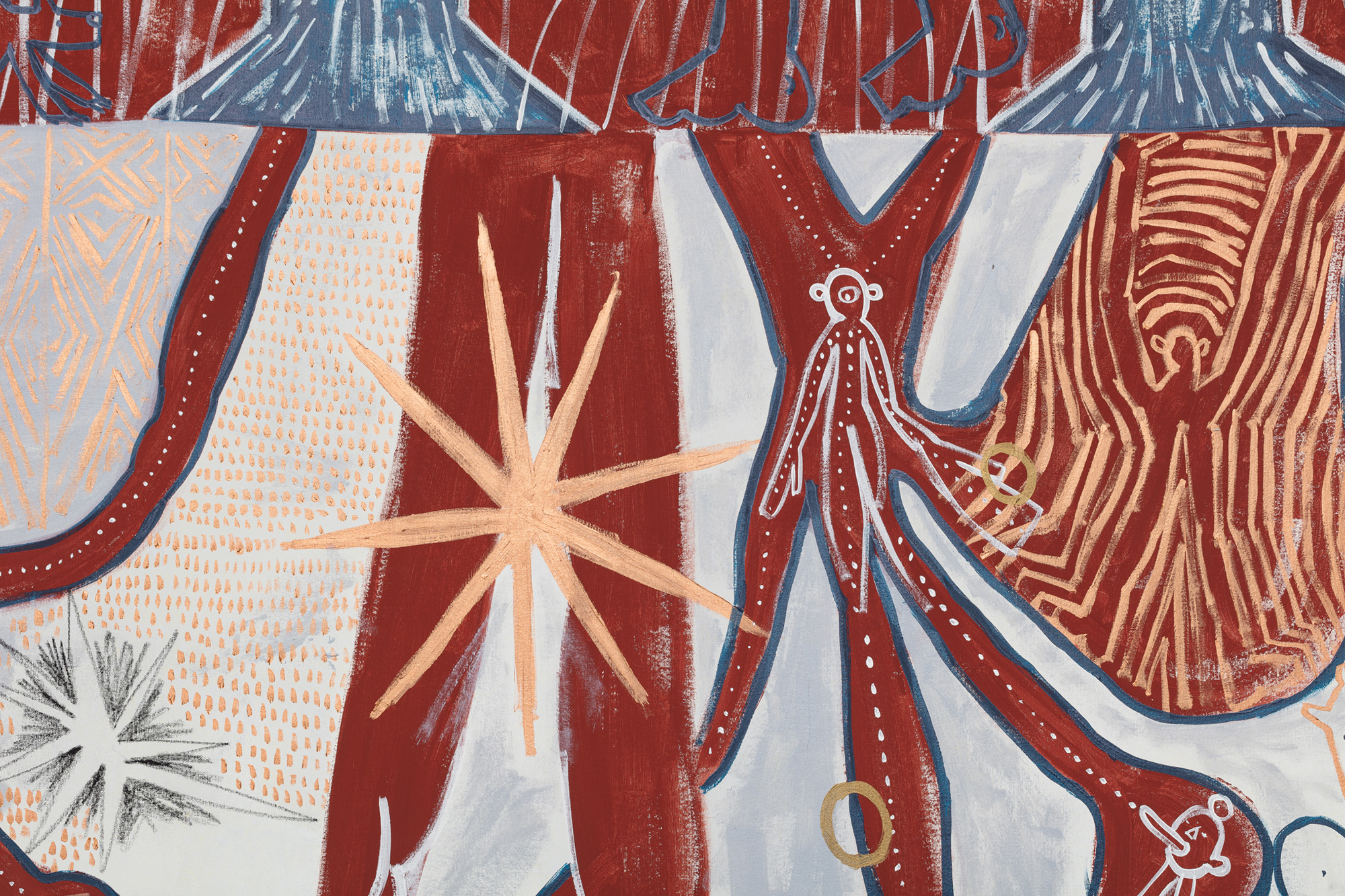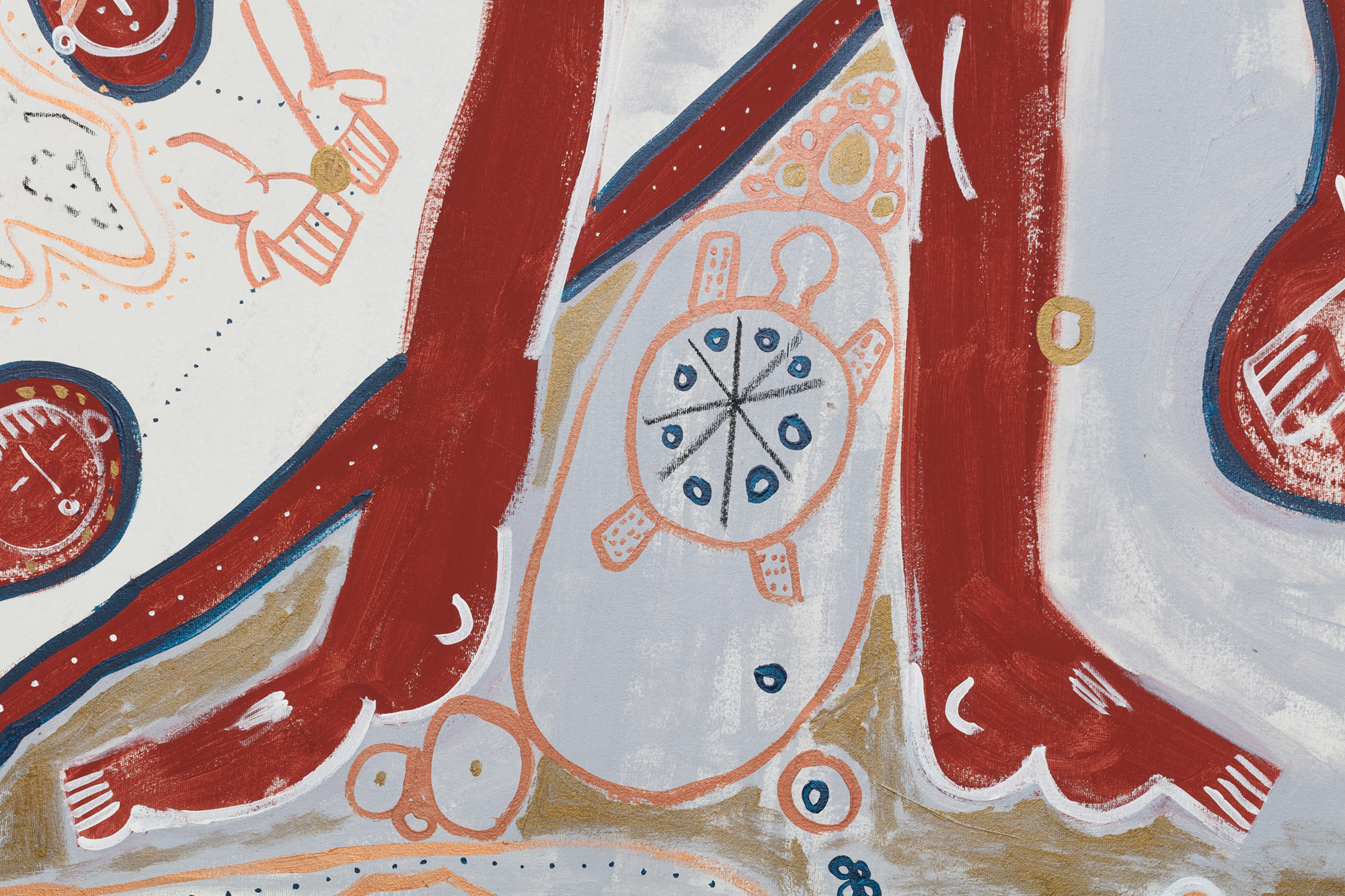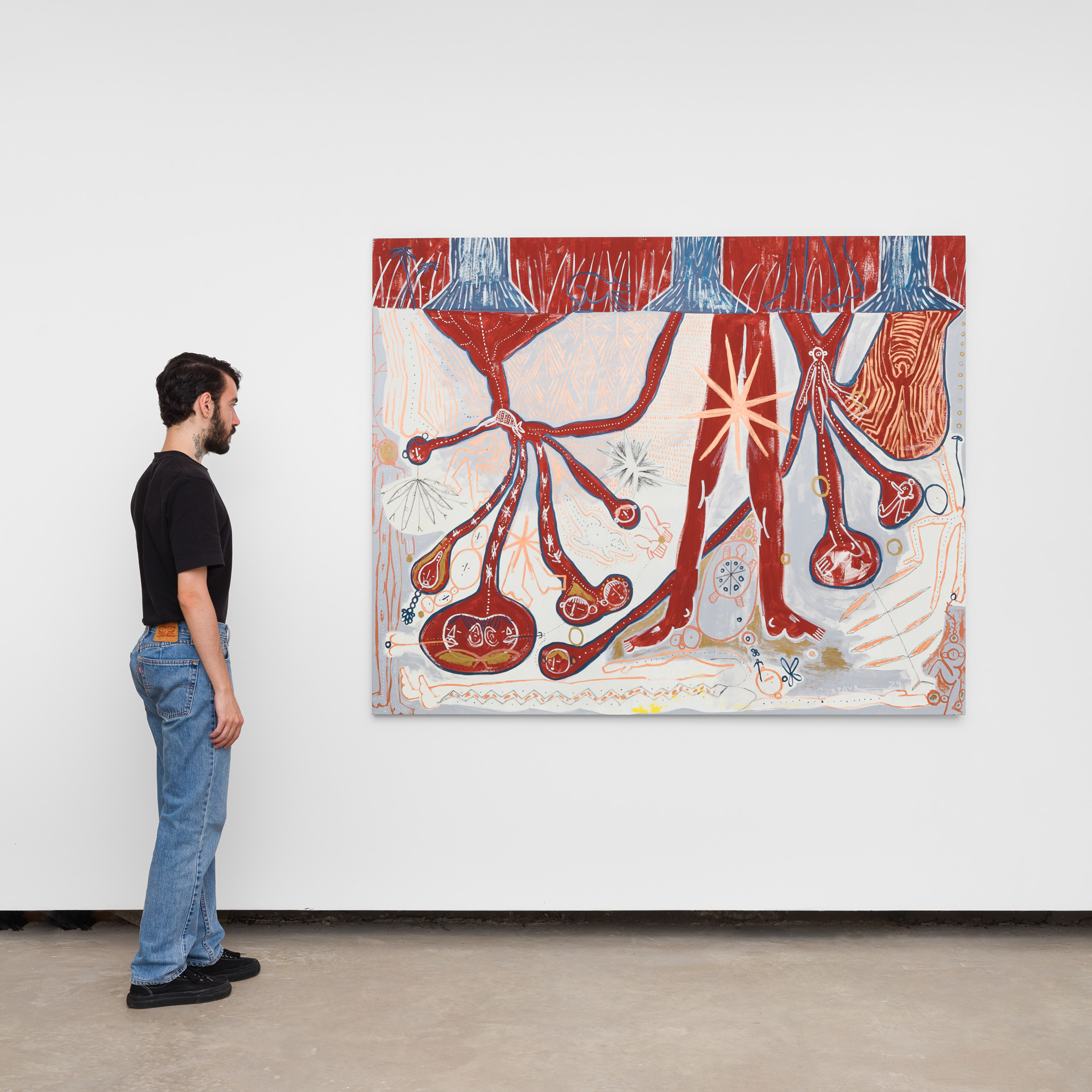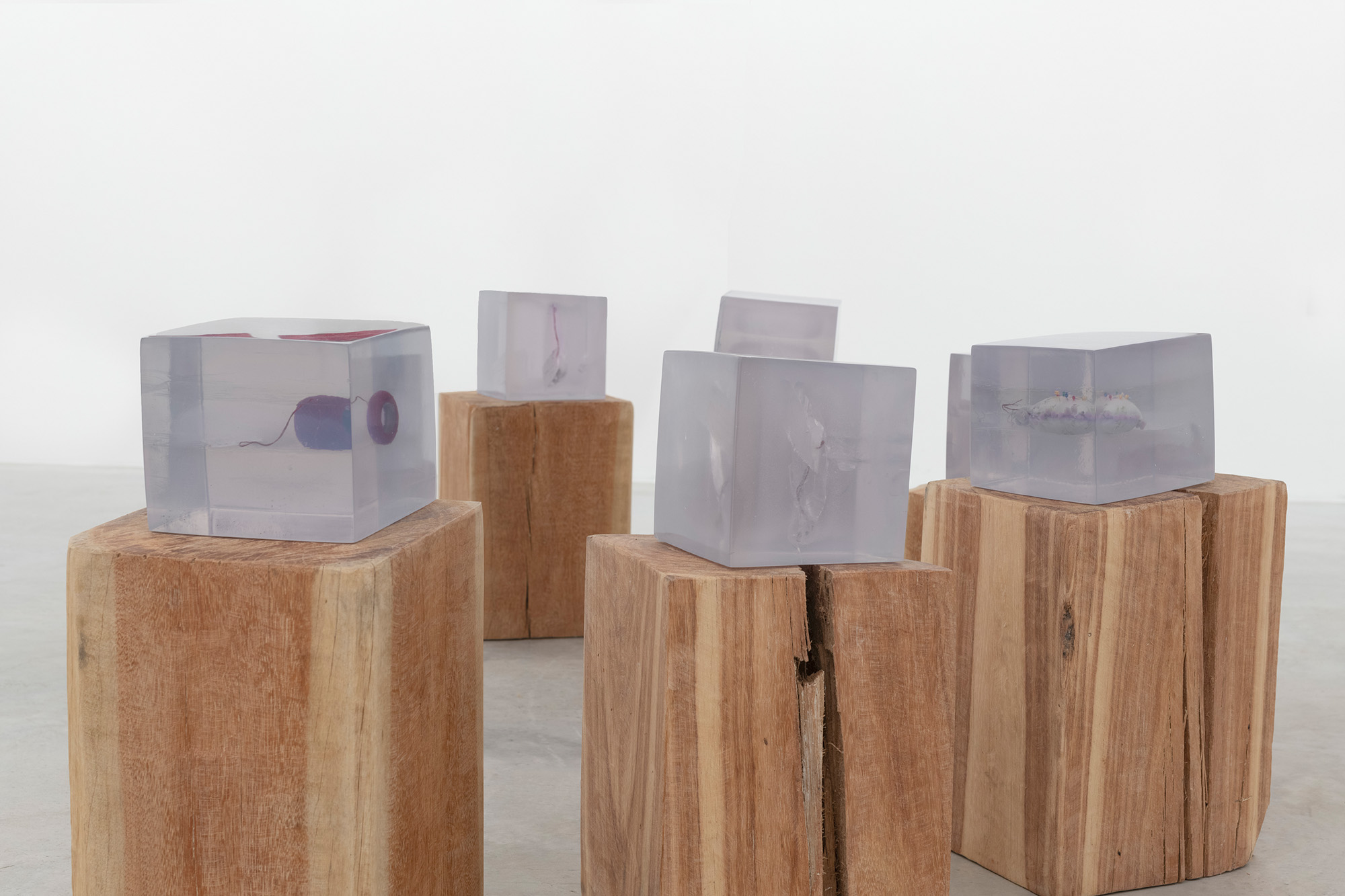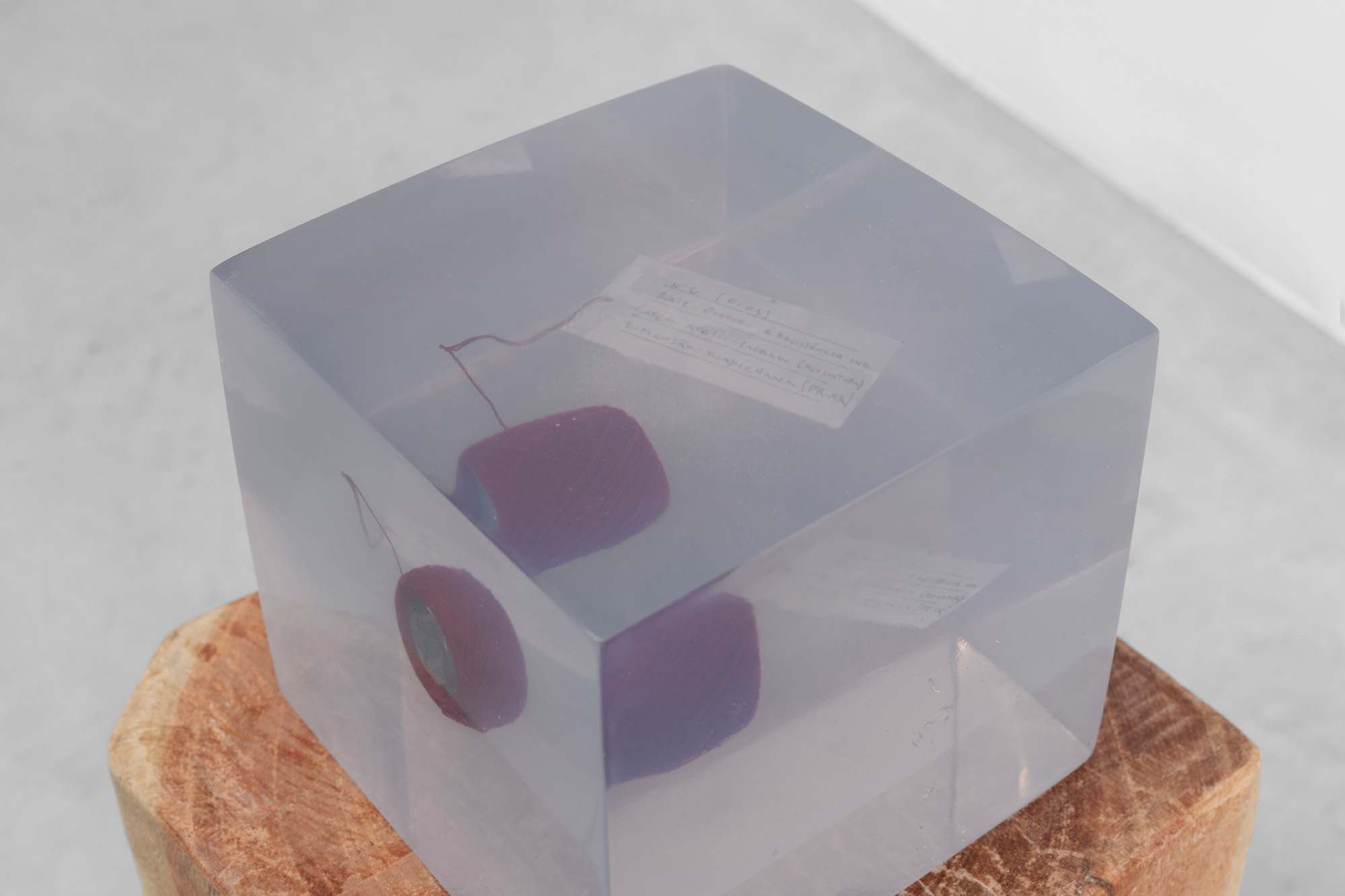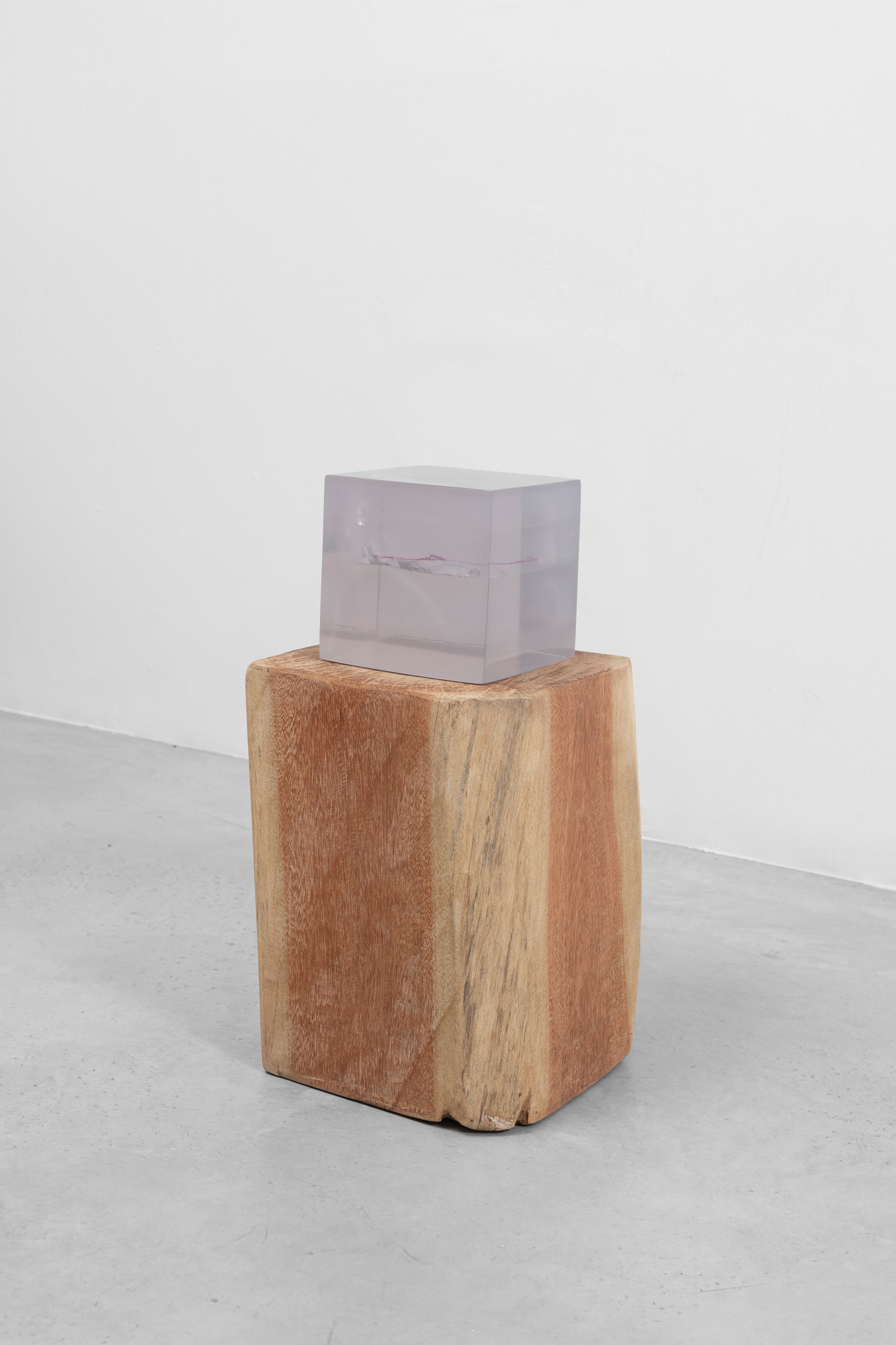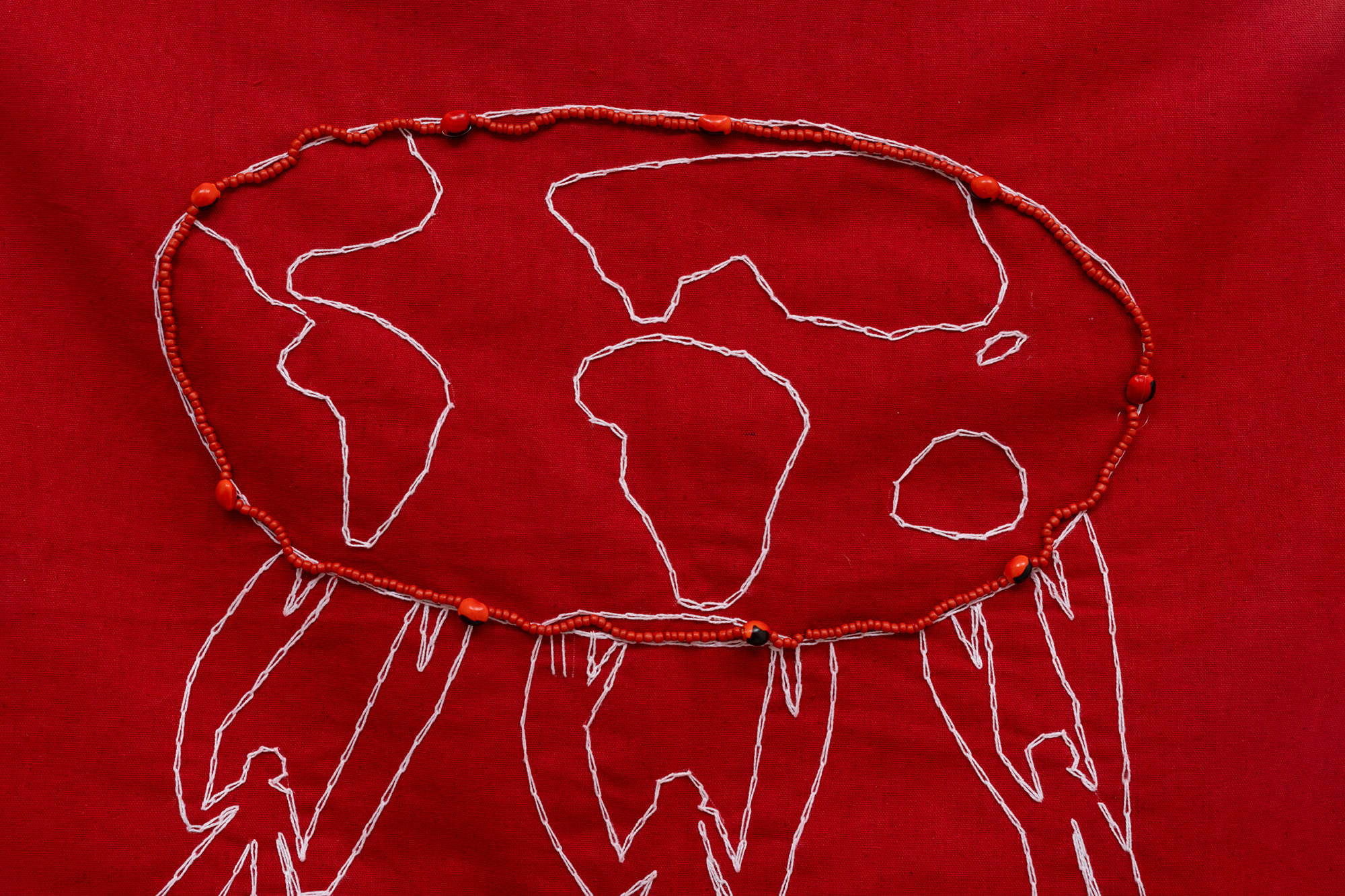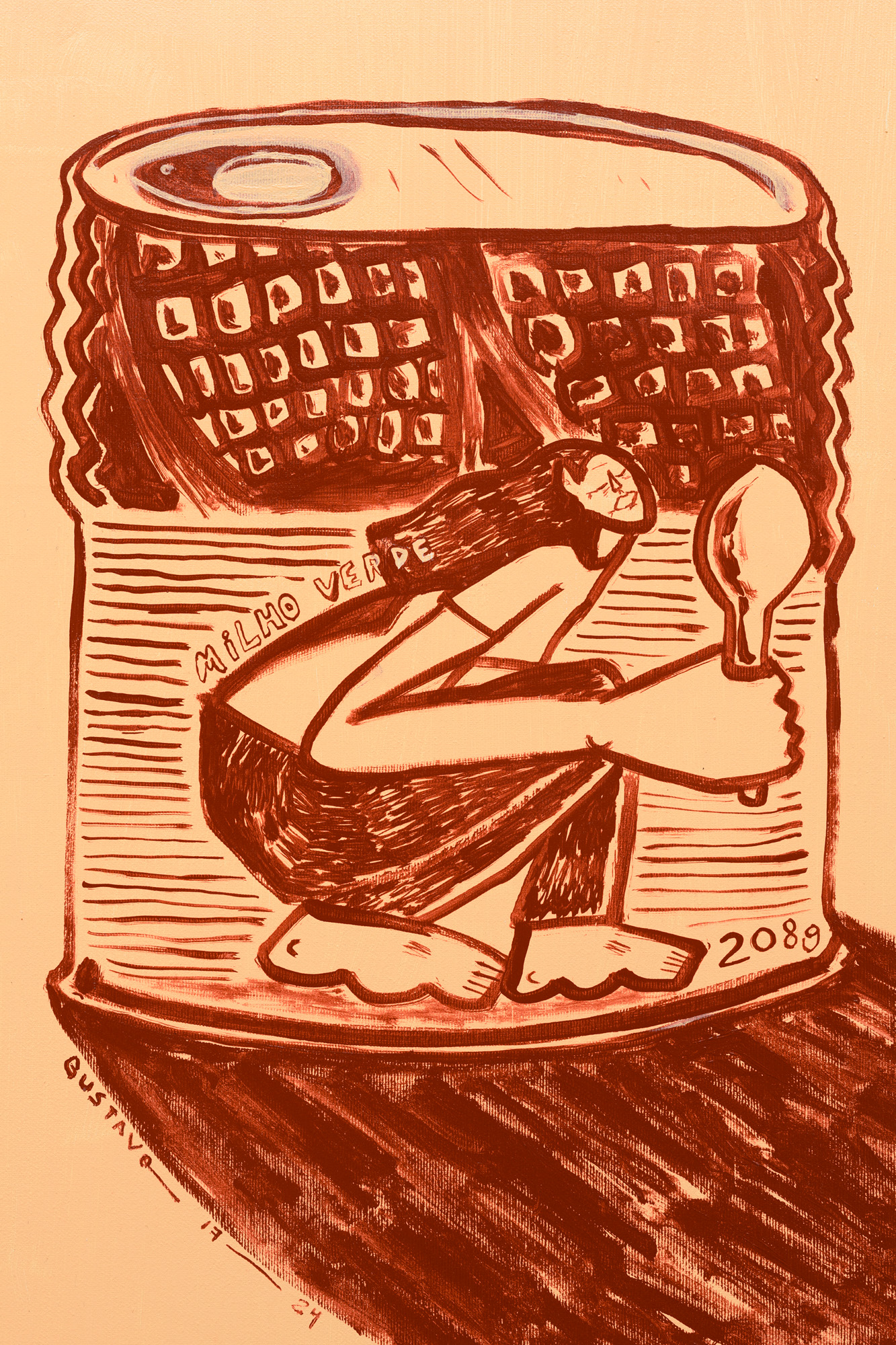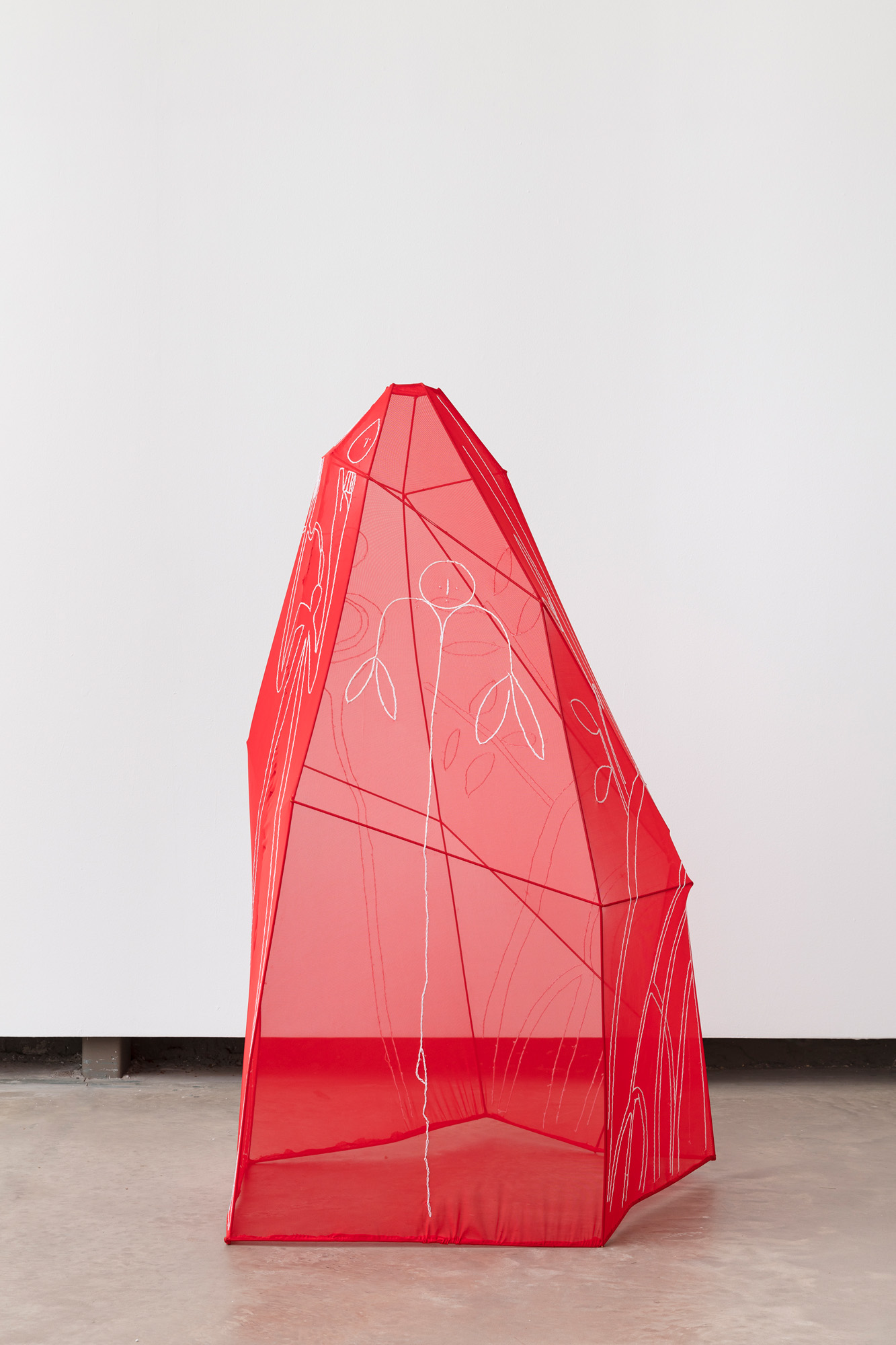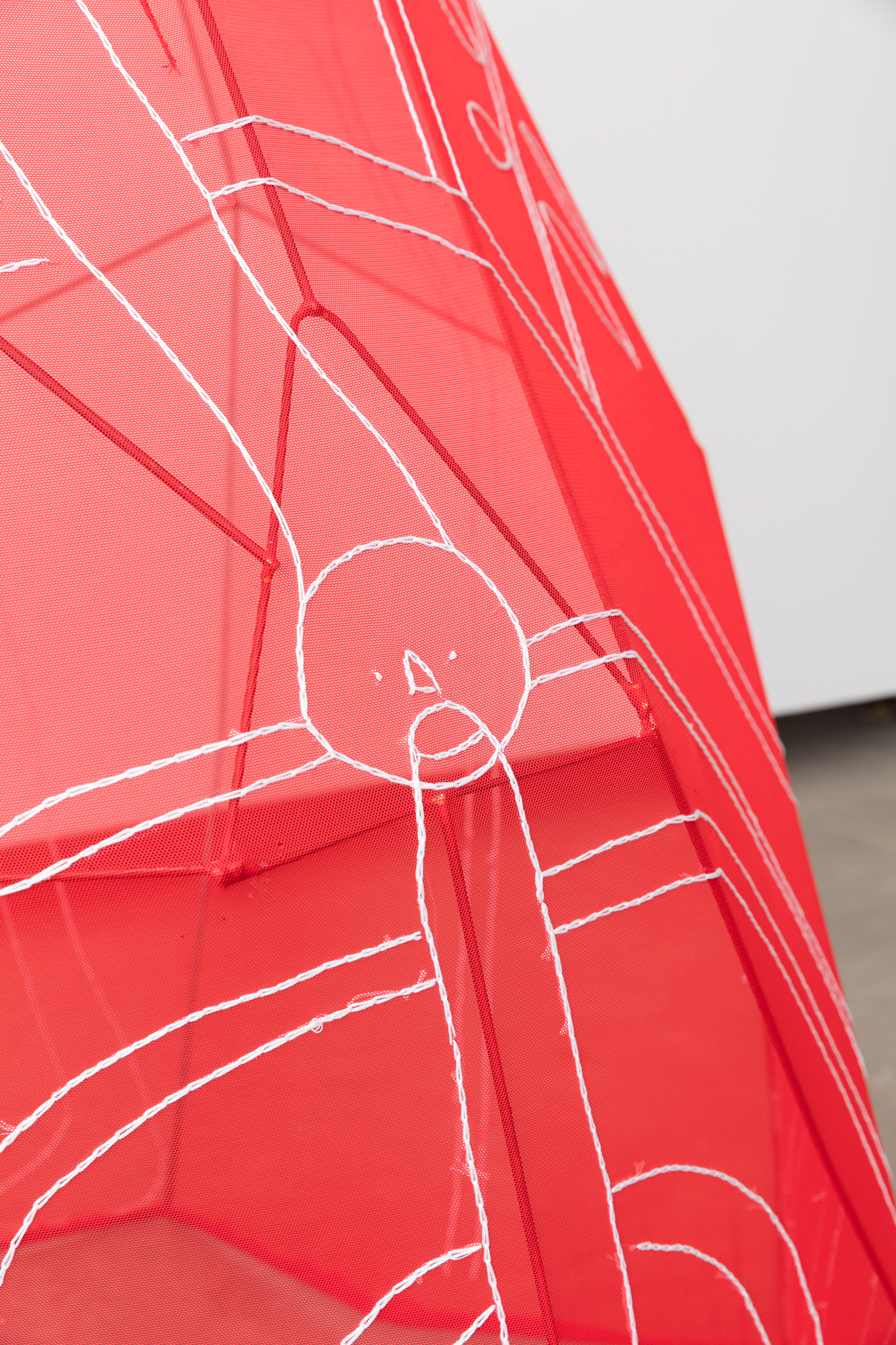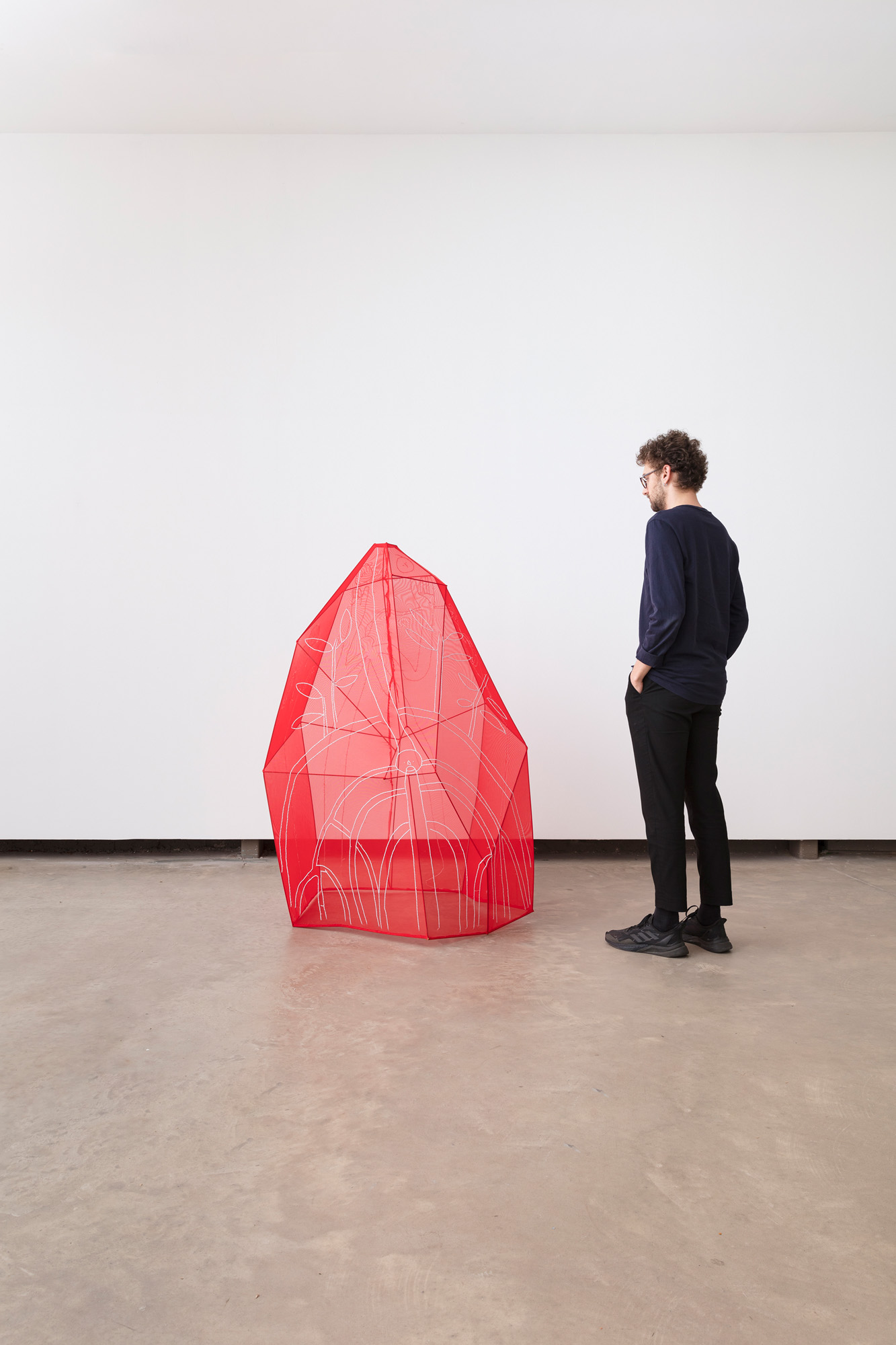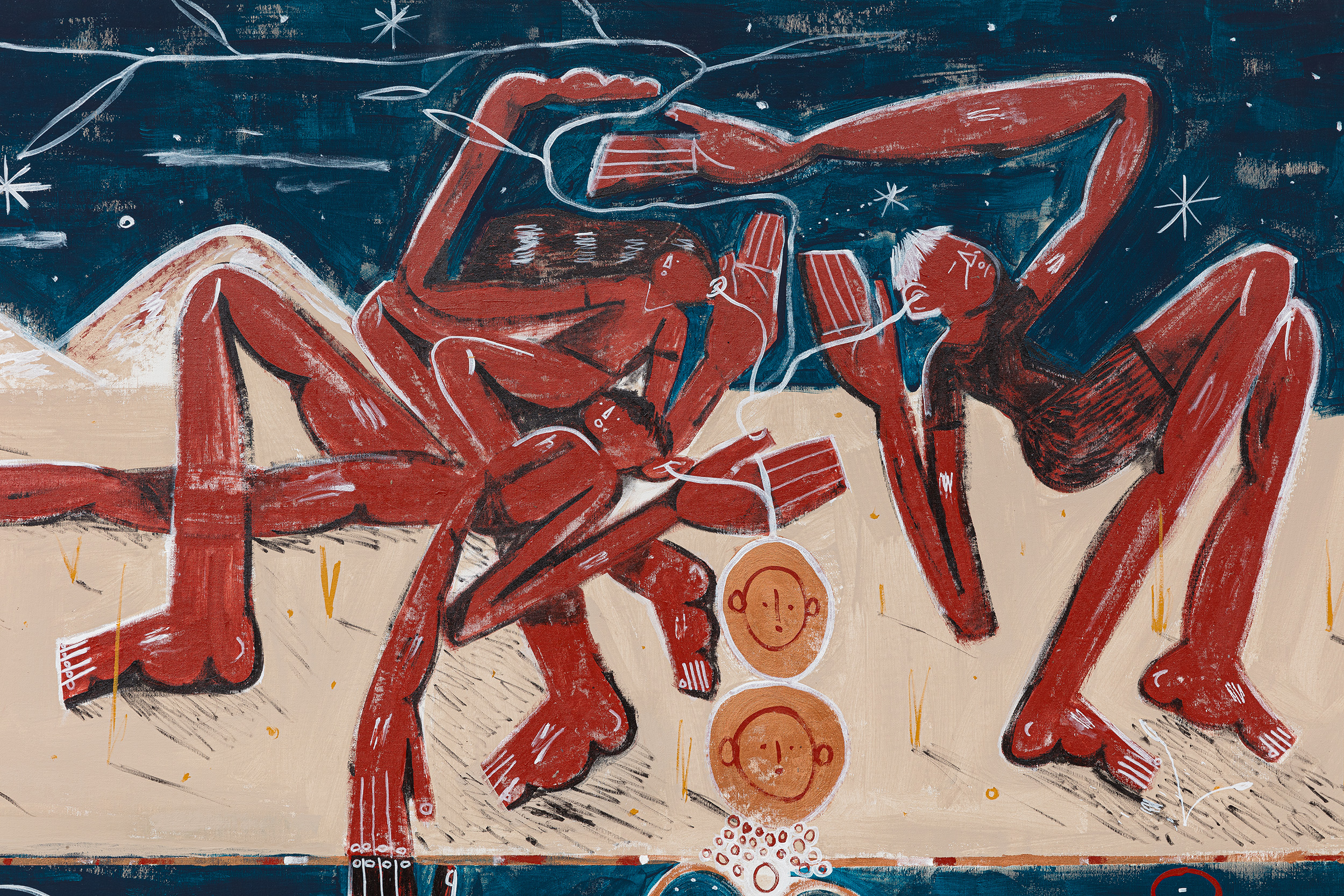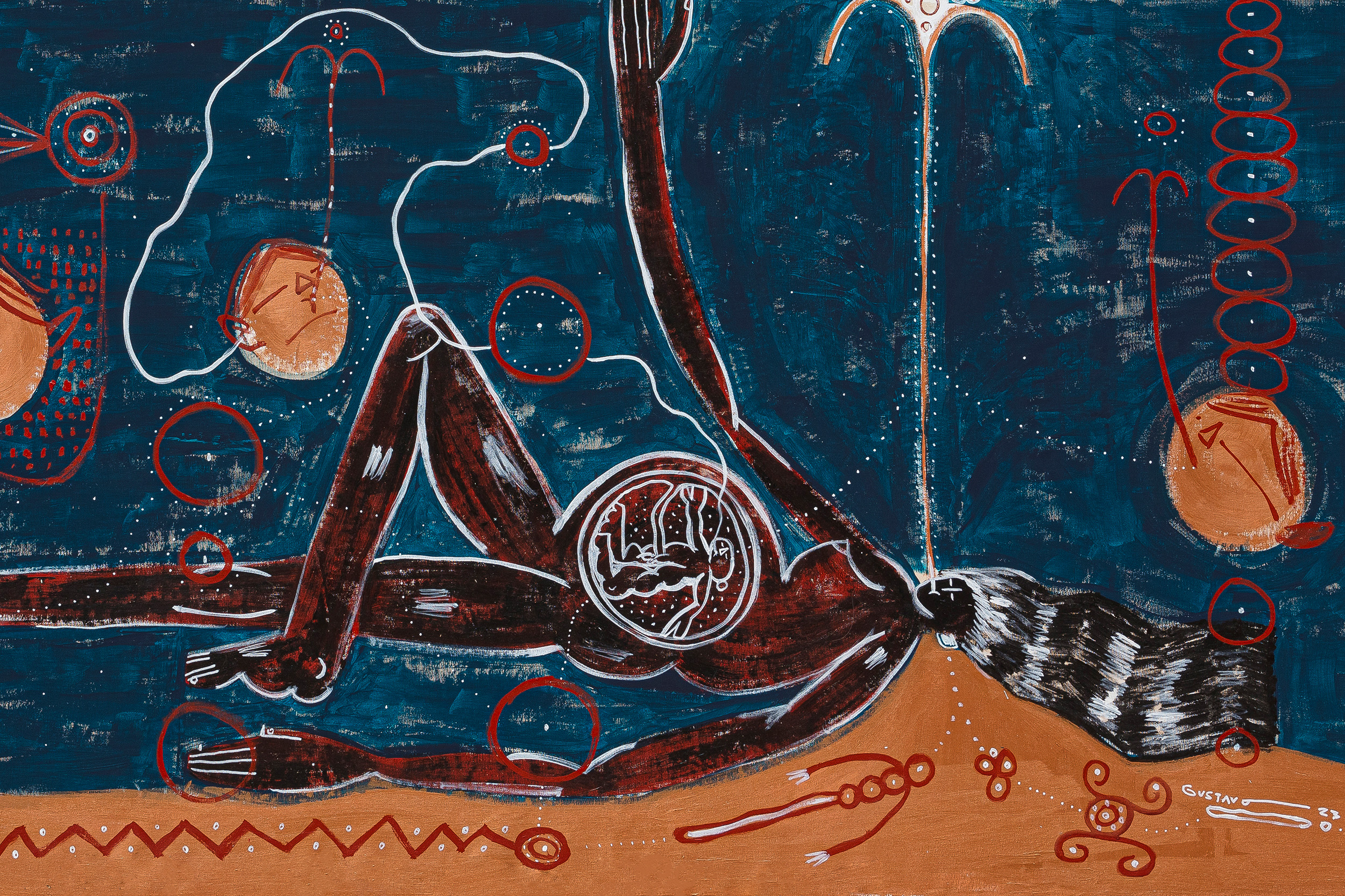Retorno à maloca, 2024 (detalhe) | Photo: Julia Thompson
Manhaba’u | Millan, São Paulo, 2024 | Photo: Julia Thompson
Manhaba’u | Millan, São Paulo, 2024 | Photo: Julia Thompson
Manhaba’u | Millan, São Paulo, 2024 | Photo: Julia Thompson
Manhaba’u | Millan, São Paulo, 2024 | Photo: Julia Thompson
Manhaba’u | Millan, São Paulo, 2024 | Photo: Julia Thompson
Manhaba’u | Millan, São Paulo, 2024 | Photo: Julia Thompson
Manhaba’u | Millan, São Paulo, 2024 | Photo: Julia Thompson
Gustavo Caboco (1989, Curitiba/Roraima, Brazil) holds Manhaba’u: onde toca o invisível [Manhaba'u: where the invisible touches], his new solo show at Millan, in which he expresses his thoughts on memory and the historical and contemporary Indigenous struggle. Featuring mostly unseen works, including paintings, embroideries, objects and installations, the artist proposes a reflection on the time and memory of Earth, on consumerism and the climate crisis, and on the stories of threads and sewing as a form of resistance among the Wapishana peoples. These works point out what the artist calls “colonial coma”: colonialist legacies and violence that remain unseen as they are naturalized.
A curator of the Hãhãwpuá Pavilion, that represents Brazil at this year's Venice Biennale, Gustavo Caboco is an artist from the Wapishana People. His practice spans the areas of visual arts, cinema and literature. Manhaba'u is exemplary of how these different languages intertwine.
One of the new exhibition's cornerstones is the book Literatura do invisível [Literature of the Invisible]. Published by Picada Livros — a publishing house founded by the artist — it was released at Flip 2023 (the annual International Literary Festival held in Paraty, RJ, Brazil) where Caboco was one of the invited speakers. It is an essay-manifesto that proposes a dialogue with the various literate beings on Earth, dealing with issues of indigenous and environmental rights. “In this exhibition context, the publication becomes a curatorial object and underpins the expographic thinking and the selection of works presented,” the artist explains.
The focus on the Wapishana perspective is noticeable in the works conceived especially for the show. In the work Kynharyd, fio forte e a saúde das mulheres, created in collaboration between Caboco and his mother, Lucilene Wapichana, he relates the health of the Earth and of the cotton plants to the health of indigenous women. Moreover, the embroideries of the series AMAZAD depict females “pregnant with planet Earth”, as he defines. “If the Earth is a mother, there is also a mother of the Earth, and these diseases of consumption, of medicine and emptiness, are represented in the work.”
The friction between capitalist living and the Roraima's Indigenous communities is also a theme explored in the installation Roraimarte II and the series of paintings Povo da mercadoria [Merchandise people]. In them, Caboco addresses extractivism and cultural erasure, presenting land elements converted into industrialized products.
In Costura é resistência indígena [Sewing is Indigenous Resistance], six objects from Lucilene Wapichana’s sewing atelier are preserved in resin with their respective labels. Arranged on wood pedestals (made from Amazonian chestnut wood recovered from the seizure of illegal deforestation), these objects contribute to the historiography and struggle of Indigenous women. Whilst the introduction of the sewing machine in the Wapishana villages was a colonial imposition, the creation of threads, spindles and weaving have always been part of this Peolple's traditions. Thus, the appropriation of the sewing machine has become a method of resistance and autonomy.
Manhaba'u: onde toca o invisível consists of “thinking about the invisible from my place of origin, but also connecting us with these invisible lines that touch us, thus seeking to propose actions to train and strengthen our presence and relationship with the land” summarizes Gustavo Caboco.
The exhibition encompasses the outcomes of various projects carried out by the artist over the last few months. In a partnership with the British Museum's SDCELAR, the artist investigated the presence of Wapishana objects in museums and promoted Ateliê Lavrado, in 2023, strengthening the knowledge of sewing and community dialog in villages in Brazil. Gustavo Caboco is the curator of the Hãhãwpuá Pavilion, Brazil's Pavilion at the 60th Venice Biennale in Italy, alongside Arissana Pataxó and Denilson Baniwa.
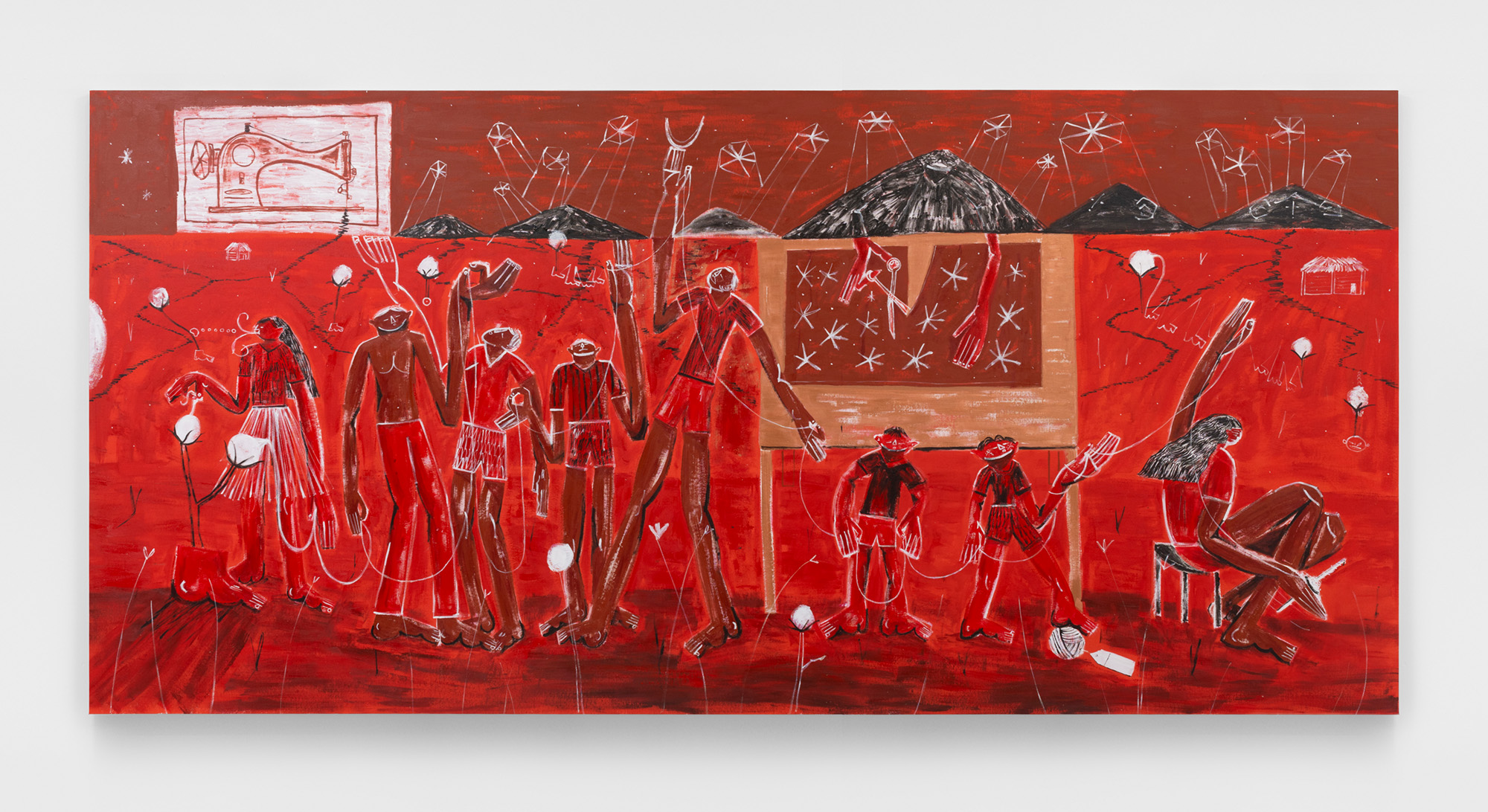
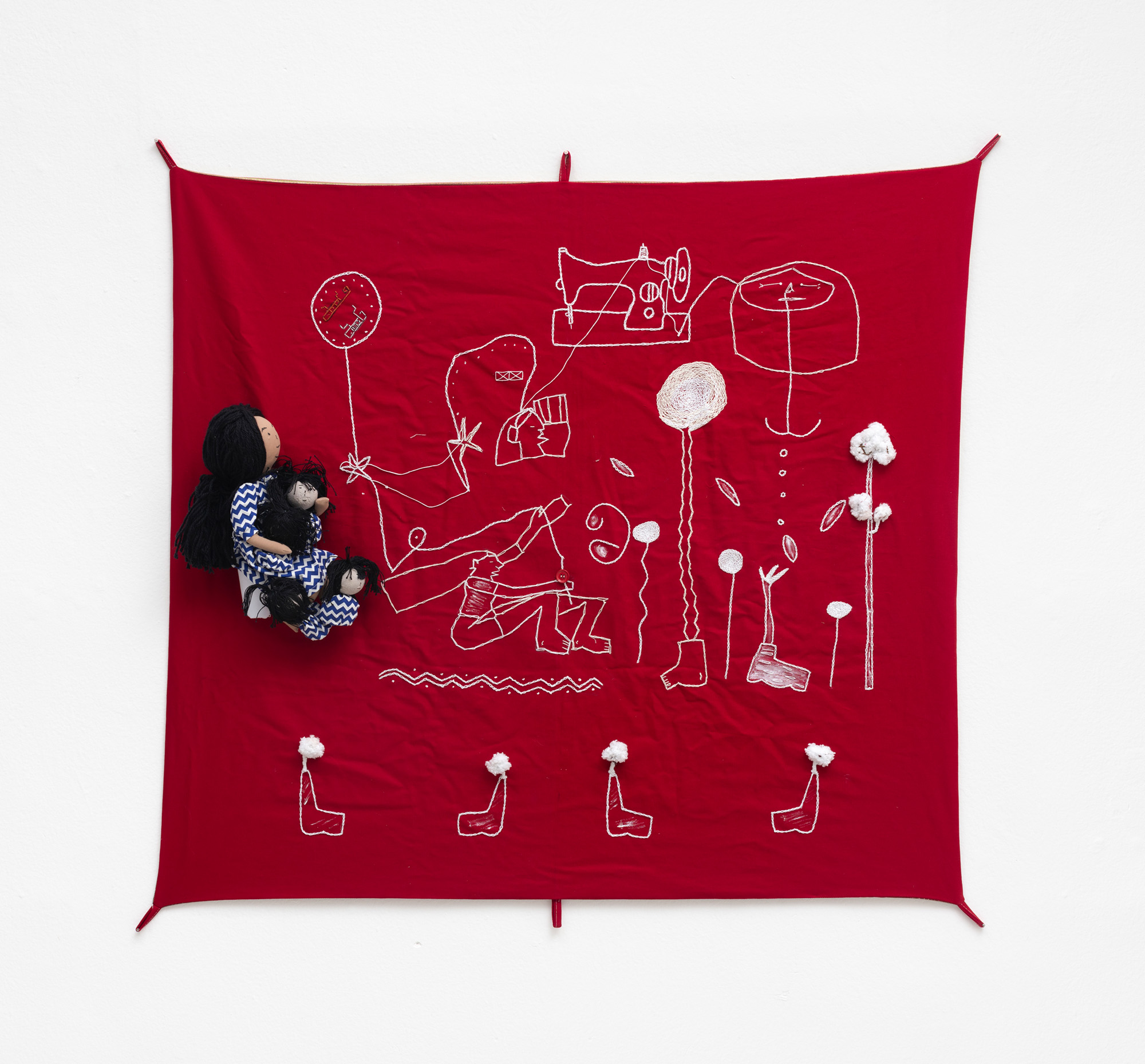
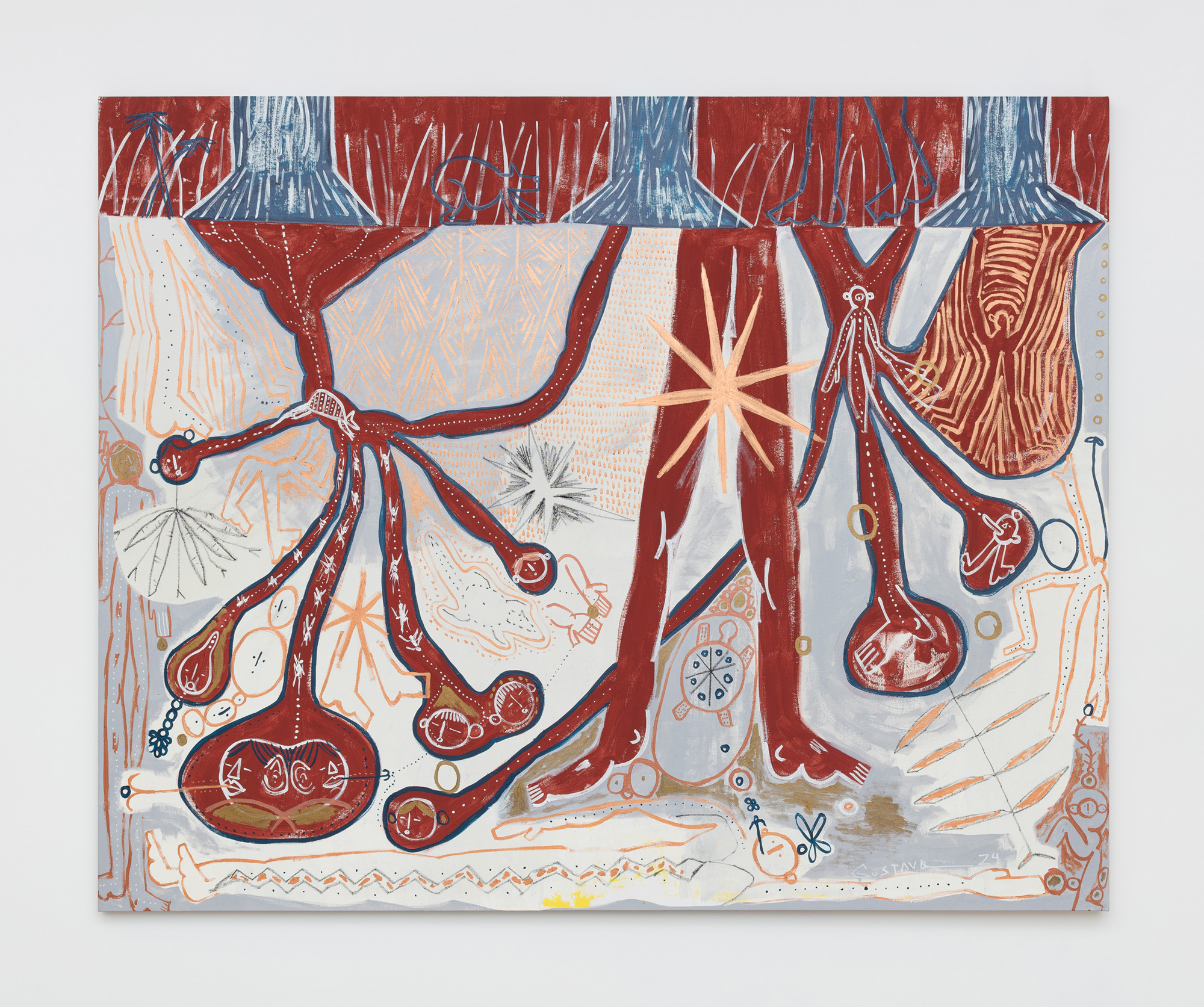
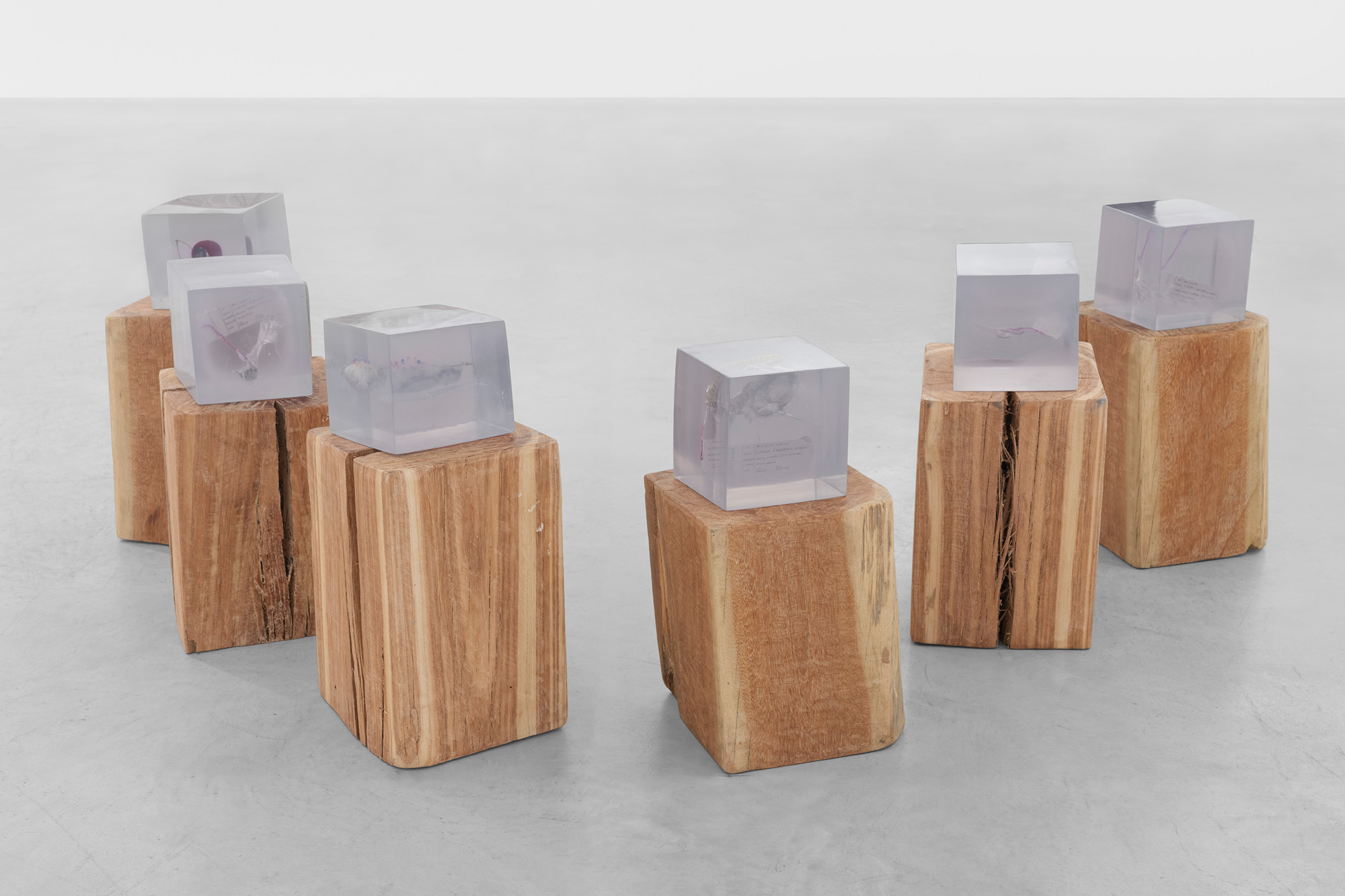
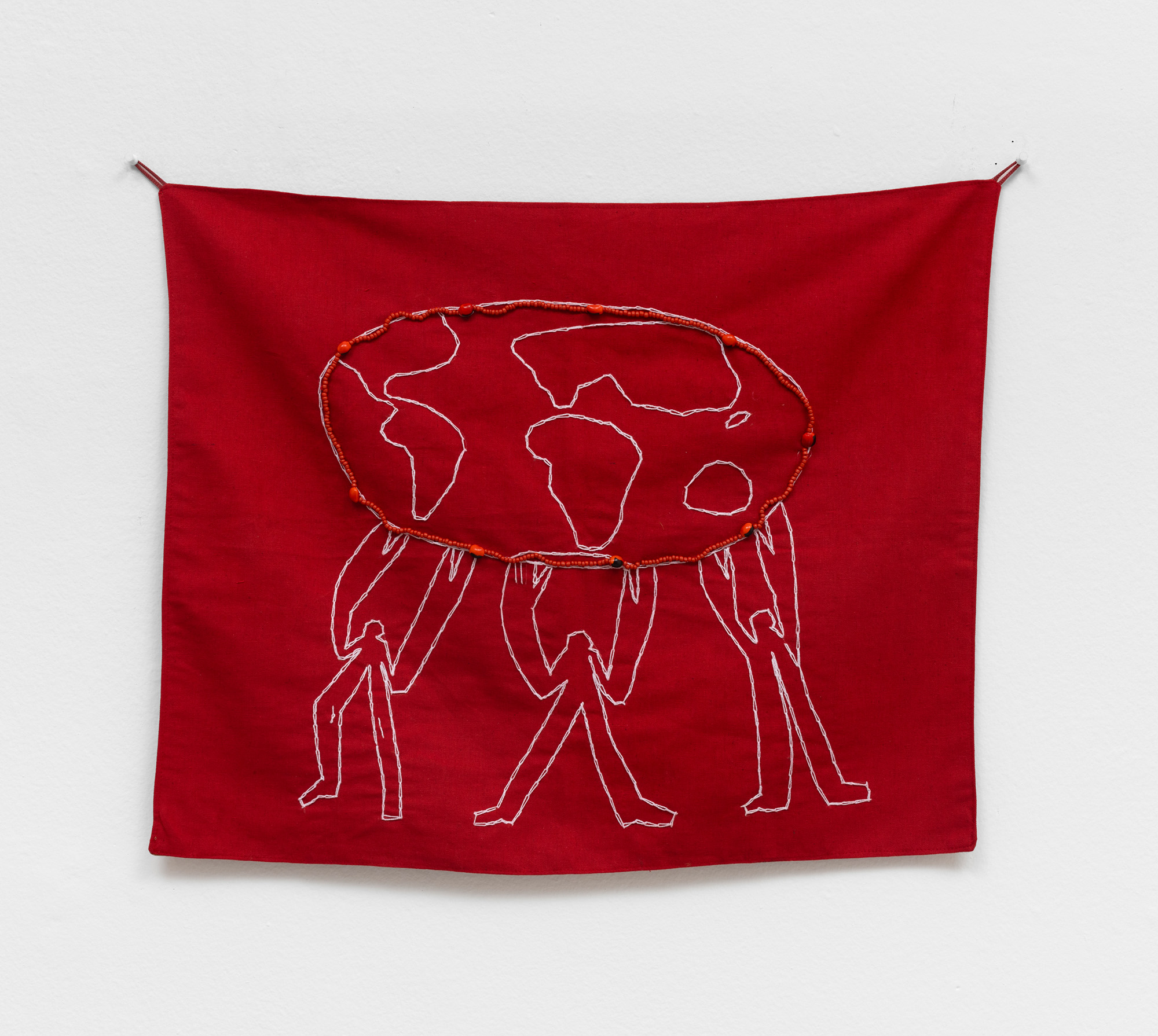
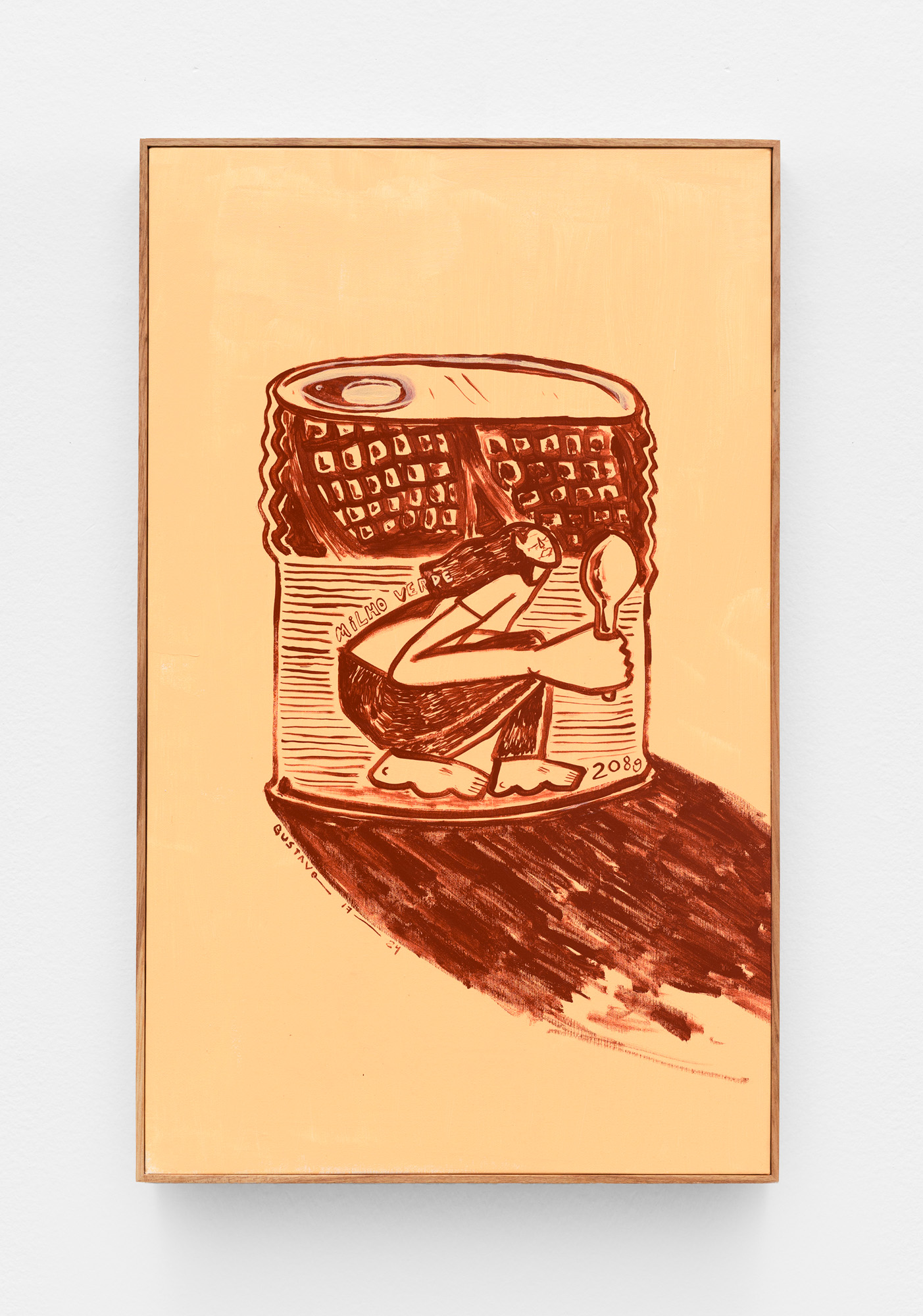

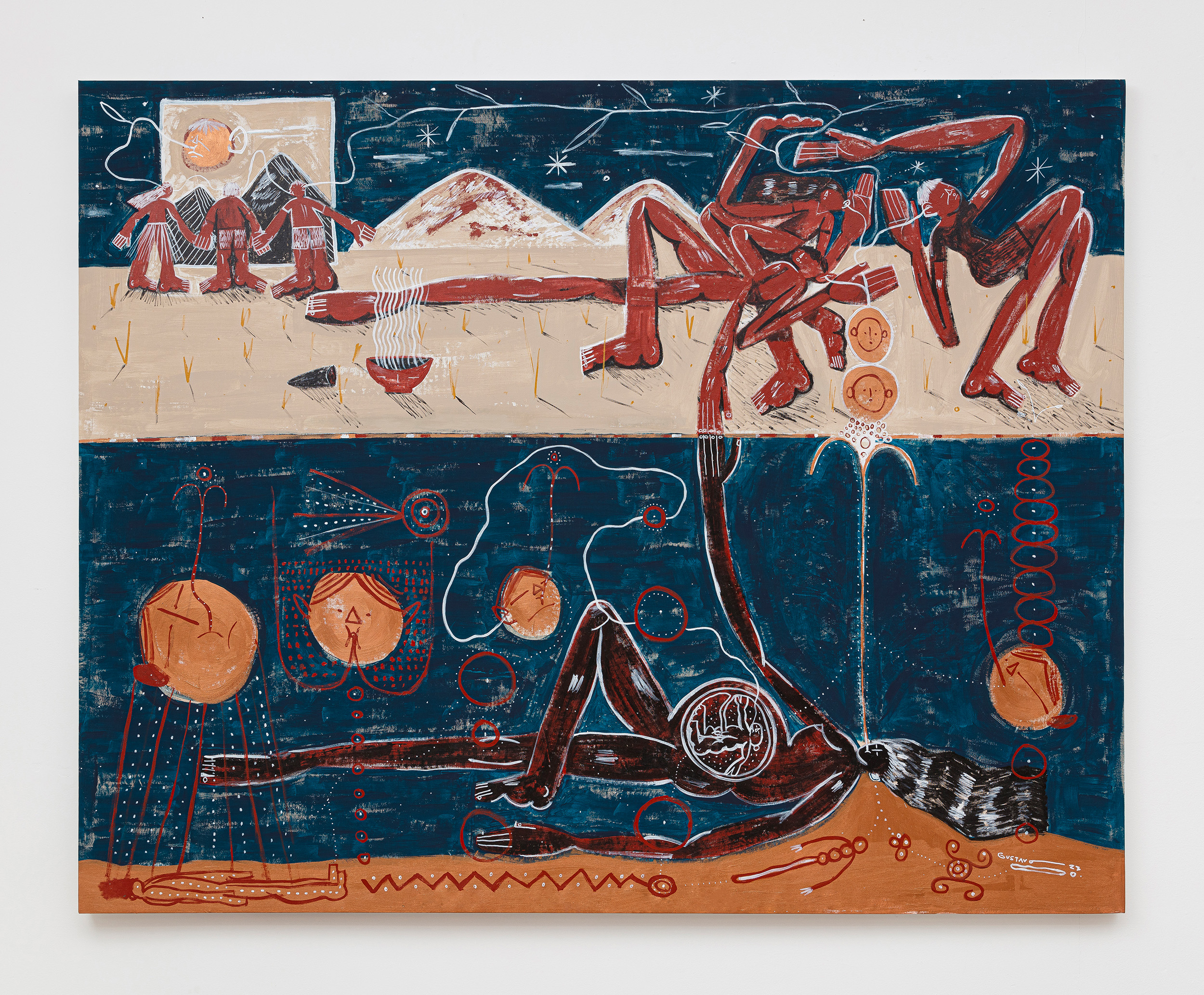
São Paulo, Brazil
New York, USA
New York, USA
São Paulo, Brazil
New York, USA
Rio de Janeiro, Brazil
Rio de Janeiro, Brazil
São Paulo, Brazil
São Paulo, Brazil
